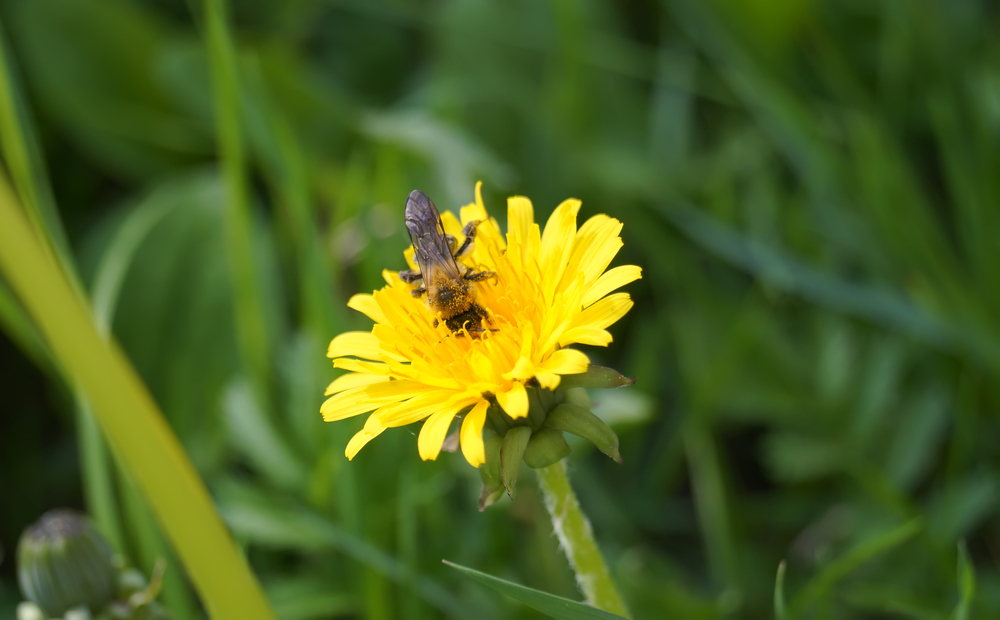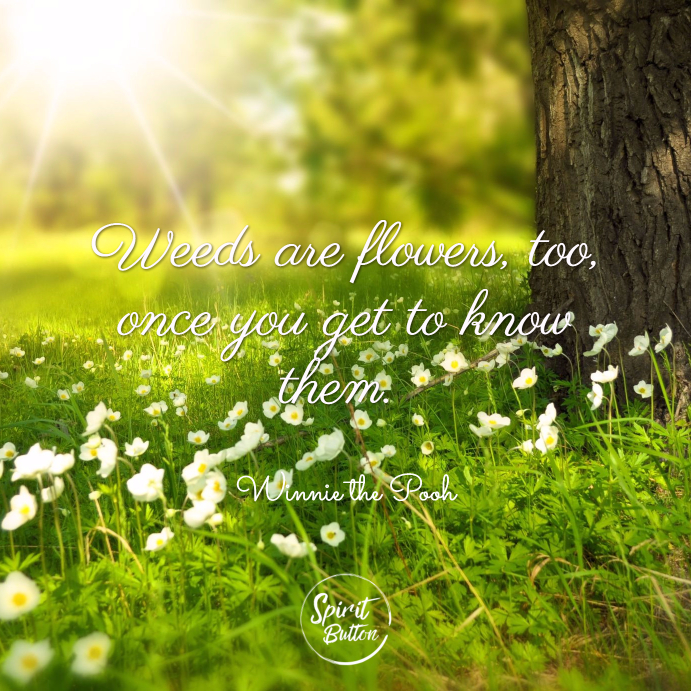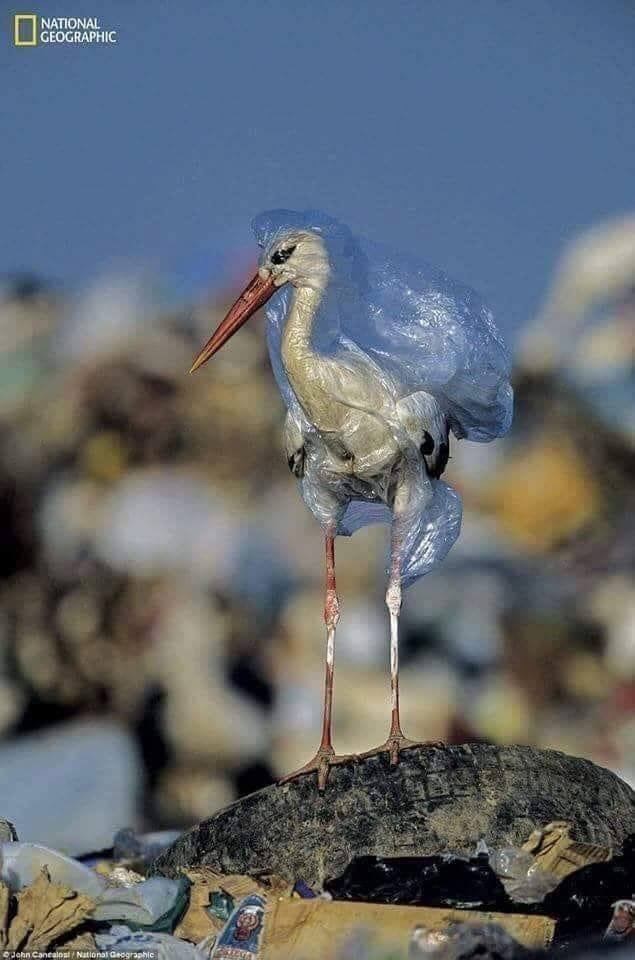

Confession time here – I have lots of weeds and I mean big industrial size weeds. I have a very large garden and I simply don’t have the staff (who am I kidding – I am the staff!) to manage it effectively. Be careful what you wish for, I wanted a large garden and I got one but the larger the area you have the more room there is for weeds to grow. Team that with the fact that I refuse to use herbicides and the outcome is that I have weeds. Another confession …. I don’t really mind having weeds as I can make use of all of them. Luckily I don’t mind a messy garden either so lots of weeds aren’t going to destroy my soul.
Change the way you look at weeds and managing them changes too. After all, weeds are simply plants growing where you don’t want them to grow. No plant is useless and even weeds have multiple uses for gardeners. View your weeds as a resource and you have something for nothing that you can make use of. We don’t have access to a green waste bin so green matter grown on our land needs to be managed on our land which has led me to find ways to use them.
Sometimes just looking at a weed differently can change the value that plant has to you. Dandelions are weeds to many gardeners but they are also a useful plant. They flower when many other plants are not flowering providing food for bees and other beneficial insects. They are edible and nutritious for humans and animals. The flowers are pretty especially en masse.
Amongst the weeds that I don’t particularly like is Pattersons Curse – touching it irritates the skin and it is known to be an allergen for those with Hay Fever. I pull Pattersons Curse out before it seeds wherever possible.
Cape Weed smothers out all other plants but it is not too difficult to pull out and it also composts well.
Thistles and Bathurst Burr make my don’t like list, they hurt so they go.
Nettles are a plant on many peoples weed list however I like them although they also hurt. Nettles are a sign that your soil is full of nutrients. I had no nettles in my garden until the soil was rich and nutritious. Nettles are edible and high in iron and other nutrients that benefit us. Picking and preparing them may present more difficulty than picking Spinach but once they are cooked the sting disappears. Nettles stay a vivid green when they are cooked. Nettle and Fetta go very well together in fact, any recipe that calls for Spinach is great with Nettles instead. My daughter thinks that it is wrong to have to wear gloves to pick dinner but I think it is worth it. You can always pick them with tongs if you have misplaced your garden gloves.
Nettles also make a fabulous garden fertiliser. Simply pick a bunch of nettles and soak them in water for a number of weeks (warning the mixture will pong!) before diluting it 1 to 8 in water and pouring on the garden. This can be used as a Foliar Feed as well as pouring it straight onto soil.
It would be pretty difficult to compost effectively if you don’t have the green component. If you have chooks you are probably using many if not all your table scraps in your chook food. In this case, weeds become an essential compost ingredient. When I have an excess of weeds I have been known to put them around the base of bushes (not right up against the trunk) which works particularly well if the bush then hides the weeds. The weeds compost away under the bush feeding the soil while also acting as mulch and preventing the growth of more weeds.
When I want to extend a garden bed I often pile weeds from the bed on the end in the direction I want to extend and again the weeds are adding goodness to the existing soil and acting as mulch until I am ready to fully extend the bed.
I have a number of raised beds (just short of 1 metre high) that I call my old age beds as I will not have to bend over to plant or harvest them. There was no way I could afford to buy in enough soil to fill each of the beds so as they were made I would throw in weeds and keep topping them up as they compacted. It was slow but very effective saving me a great deal of money and giving me a very rich and nutritious soil.
After one too many loss of my chooks to foxes, I no longer allow the girls to free-range. They now receive a wheelbarrow full of weeds at least once per week which they enjoy hugely and after they have worked it all over it goes back out on my garden.


Whether you believe in climate change or are a sceptic, it seems there is no doubt that we are destroying our world. We are literally drowning it in plastic! Images appear on social media each day of dead whales with stomachs full of plastic waste and islands of floating plastic rubbish. We simply cannot go on thinking that the problem belongs to someone else, that because we don’t live near the coast or are particularly careful with disposal of rubbish that we are absolved from the problem.
Last summer we went to the coast of New South Wales for a break. The beaches were beautiful, and the weather was great but one thing we found was the amount of rubbish floating in the water was horrendous. Straws, soft drink bottles and snack food packets such as Tiny Teddies and Shapes popular with children. At some beaches it was unswimmable due to the filth in the water.
Returning home via Sydney I paid particular attention to the rubbish along the roadside and was horrified by the amount of single-use plastic lying by the road. The culprit in this case was soft drink bottles. Comparing this behaviour to pigs is really not fair to pigs!
Plastic in and of itself is not evil; in fact, it was a fabulous invention that allowed food to be stored more effectively and gave many other benefits. It is the one-use plastic that is the real problem and there are many things we can do about this. Straws are one example of one-use plastic. Surely if you are an adult you do not need to drink from a straw and if you do, purchase steel ones which can be used for longer than you may live. There are straight ones and bent ones, colourful or plain, thin ones and thicker ones for smoothies. Metal straws have become much cheaper than they were initially and are now available in a broad range of shops. Nothing beats an ice-cold smoothie consumed through a metal straw.
The other single use plastic which is so damaging to our environment is the mini packs of all sorts of savoury and sweet yummies that children love to have in their lunch boxes. Kids don’t need to miss out because you refuse to buy the multi packs of everything possible. Instead of buying the plastic packs filled with 12 or more other packs of plastic, purchase a regular size pack and divide them out into reusable containers readily available at supermarkets and variety shops. You have one reusable container and 1 piece of plastic rubbish instead of 13 pieces of rubbish. Recycle your one piece of rubbish and you have a happy child and a clearer conscience on the environmental front.
Soft drink bottles are also easy to reduce, simply don’t buy them! If you need or want a soft drink (and let’s face it sometimes you do) buy it in a can or in a glass bottle. Another alternative is to use a soda stream and make your own soft drink. You could even have a go at making your own cordial syrups (I made a Blood Orange and Cardamon one that was sublime) or use a squeeze of fresh citrus to add freshness. Or you could try fermenting your own Kombucha – but that’s another whole adventure in itself.
Herbivorous animals cannot survive without the plants grown in soil. Humans may be able to manage in a soil-less environment by growing plants in hydroponic systems, but would we want to? We would need to be vegan as there wouldn’t be animal products to consume and I know the carnivores I share my life with wouldn’t be happy with that.
As I write this post, I have dirt under my nails from a hearty weeding session in my vegetable garden. My garden provides us with most of our vegetables and me with sunshine and hard work as well as time spent with my dogs who enjoy the garden as much as I do.
When I started my rather large veggie garden the soil was clay that had been part of an overgrazed paddock for many years. We had pigs in the paddock for a couple of months before I converted it to garden so there was some latent fertility in the soil. The paddock was growing mainly Patterson’s Curse and Cape weed. As I already had a number of raised beds in what I call my kitchen garden I was not in a mad rush to grow immediately and had the luxury of time to spend on preparation, in particular soil preparation. My method was slow but effective.
After deciding where the beds would be, I slashed the area and then covered it with newspaper and cardboard before layering weeds (I have big industrial strength weeds here not delicate little ones) a variety of animal manures and straw. 6 months later and I was able to plant my first vegetables in what was now good soil. The work didn’t stop there however, as although the soil was great each crop grown in the beds depleted the nutrients.
If I hadn’t had time and resources on my side, I could have achieved the same result by buying premium quality organic compost from the likes of Jindalee Ag, an industry leader in the supply of one of the best premium quality composts on the market. www.jindaleeag.com.ay/wheretobuy/
Several years ago, I did a Permaculture course and studied a Diploma of Organic Farming. With the skills and knowledge I gained, I am now able to make a number of brews for my garden (who knows, maybe in a previous life I was a witch!) including Nettle, Comfrey, Manure and Carp tea. Making your own Carp brew is probably not to be recommended as that stuff was pretty odoriferous during the brewing phase. I also have access to animal manures and straw so supplementing my soil with goodies is not that difficult.
If, however I lived in a more urban area or I didn’t have easy access to resources I would still need to feed my soil. Adding compost regularly, resting your beds under mulch and crop rotation are all recommended.
One of the biggest mistake gardeners make is expecting their soil to grow fabulous vegetables or flowers continuously without amending the soil in any way. Even if you buy in good soil to begin with it needs to be fed regularly to maintain optimum growing conditions. Adding a good quality compost every 6 months is essential. Many issues that occur with plants can be prevented through good soil health. Healthy soil grows healthy plants!
Visit our UPCYCLE HUB at www.jindaleeag.com.au/upcyclehub for heaps of ideas on using compost, garden brews and more.